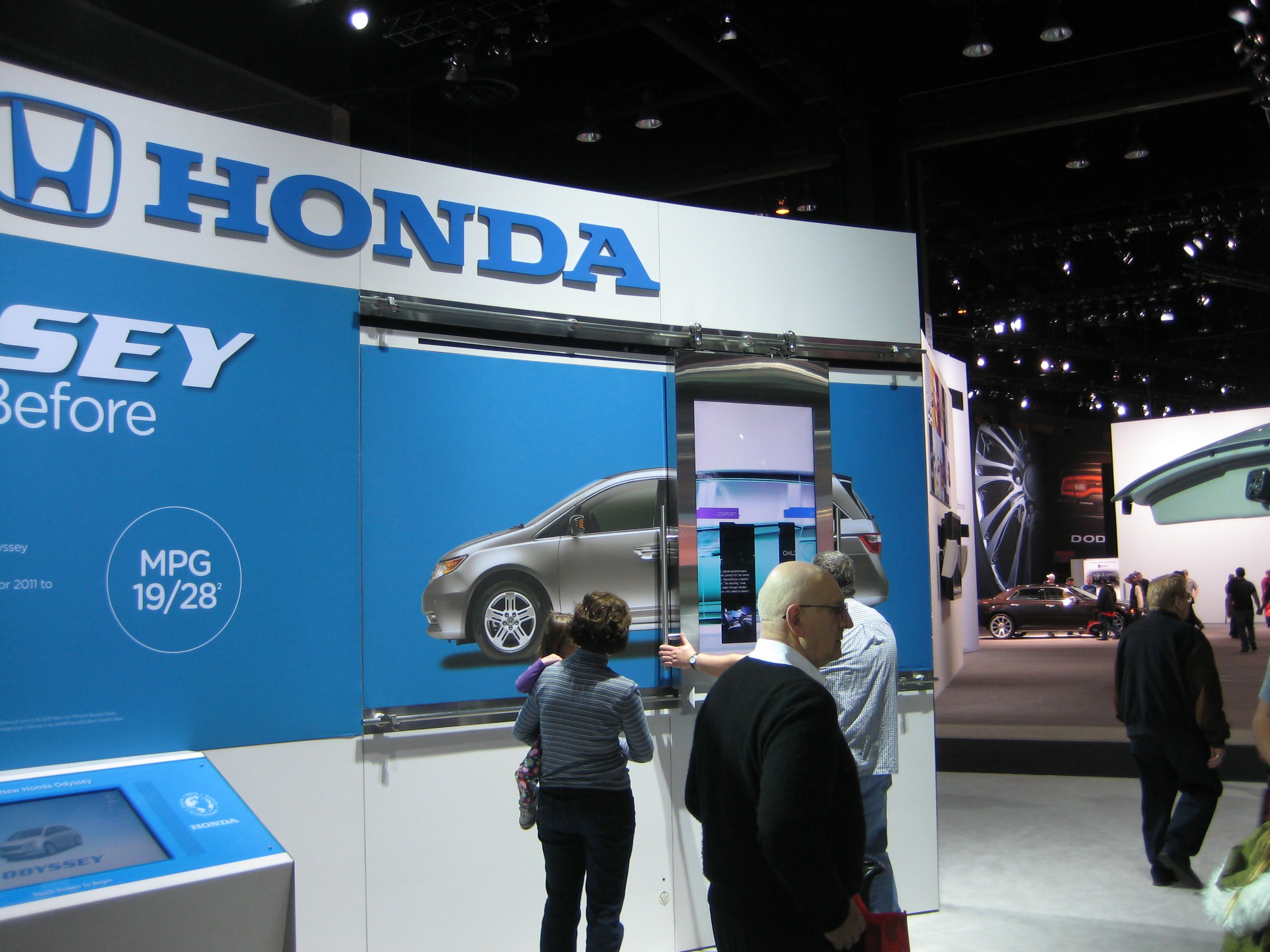A while back, I first viewed Amon Tobin’s new stage for his ISAM tour. It was an illuminating and innovative experience to view online. Yes, I am going to see him when he comes to Chicago in October to experience the projection mapping for myself. Yet, when I viewed it, I knew that it was so powerful and could not go unnoticed. I tweeted the video and got some amazing responses. One of the responses was from @mrrylln from our London office. This guy, is an amazing creative and witnessed the show himself out in the UK. He brought an amazing idea to the table. It was simple, how can you integrate social into something like that? Well, that got me thinking.
I wasn’t just thinking about projection mapping and social media, but events and social media with innovative technologies. We are reaching a period where users are starting to engage themselves with brands and locations rather than the other way around. How do we tap into that advocate power being marketers? These users who are checking into venues and are leaving comments about the experiences and by extension, building brand awareness for us.
Now, my question is, how do we take that check-in and make it worth something to the consumer? Well, it has to be valuable to the consumer, it has to be innovative to leave a mark, and it has to be engaging. I think that we have become pigeonholed into the simple check-in in social media. Check in here, then you get this. Incentive based check-ins have their place in the social ecosystem, but not to the point of consumer retention.
Another question is, can you buy friends, can you buy loyalty? The answer is no, you cannot buy loyalty. Loyalty, like trust, has to be earned and brands are not exempt from that. So, let’s push this forward a bit. Let’s move beyond the check-in and beyond a simple incentive.
Real-time engagement is the key; real-time engagement through innovative technologies. Let’s think of a concert. There is a band on stage and you have checked into the venue and that’s about it. You told your friends, both online and offline that you are there. Where is the engagement by the band? Perhaps they have a tweet to screen or a photo-to-screen technology set up? What if the band allowed you to vote during the show, via LBS, what the set-line up should be? And, what if, after the show, those who participated got the concert for free as a download? What if then, the band asked you to rate the show and share your experience or if the set line up worked? Or, what if the same type of line up occurred in Europe, from others voting and the band let you know after the fact? This is the type of real-time engagement I’m talking about here; taking the check-in by a consumer and doing something with it.
Recently, Foursquare announced they are offering event check-ins along with their location check-ins. Instead of checking into a concert venue, you are checking into the concert itself. This change was created by Foursquare after they observed all the check-ins by their users and noticed they were commenting on the event and not the location. This idea is brilliant and the next level of where event based social needs to go.
I submitted a SxSW panel topic called, Move Beyond the Check-in: Making Events Truly Social. This is line of thinking is what I will, hopefully, be presenting at SxSW 2012. I will be exploring new trends, technologies, consumer behaviors and ideas in event based marketing.
This is the new frontier. We, as marketers, need to take this relationship that the consumers form with the brands, onsite to online. We, as marketers, need to engage these consumers on behalf of the brand in innovative ways through technologies that offer value and excitement to the consumer. We, as marketers, need to retain the consumer long after the event is over. These consumers who are checking into events are the advocates that all brands are looking for, and we need to welcome them with open arms into the social community.
I have some wonderfully smart and creative people joining me on this panel from all over the industry. Vice President of Social Media, Heidi Skinner from Critical Mass will offer her unique insights into consumer loyalties and new technologies. Chief Creative Officer, Joe Sutter from GMR Marketing will bring his unparalleled experience in event-based marketing to the panel. And, Siobhan Quinn who is one of the original Product Managers at Forusquare. Her experience in location-based service is unquestionable.
Here comes the shameless plug. Please read my panel entry and vote for me to speak at SxSW. I firmly believe event-based social is the new frontier for marketers and the new way to interact with consumers. (Also, if you do vote for me, thank you!)
PS: A few others from Critical Mass have also submitted entries to SxSW and I invite you to check them out.
For the Chatty Community Managers:
Confessions of a Community Moderator
Workshop and interactive “confessional booth” including moderators for Converse, Peanuts, Humana and Aveda.
For the Statistically-Relevant and Uber-Accountable:
F**k Privacy: Neuromarketing is the Web’s Future
Panel, led by CM’s VP of Marketing Science, Shaina Boone, with contributions from the Chief Privacy Officer of Adobe and CEO of Next Stage Revolution.
For a Brand’s Strategic Moneymakers:
Social Commerce: The New Standard of Loyalty
Dual presentation from CM’s VP of Social Media, Heidi Skinner, and Social Commerce Today editor, Paul Mardsen.
For the Gadget Gods and Goddesses:
Consumer Goods: The Next Social Channels
Panel, prototyping contest and demo led by CM’s SVP Executive Technology Director, Scott Ross.









